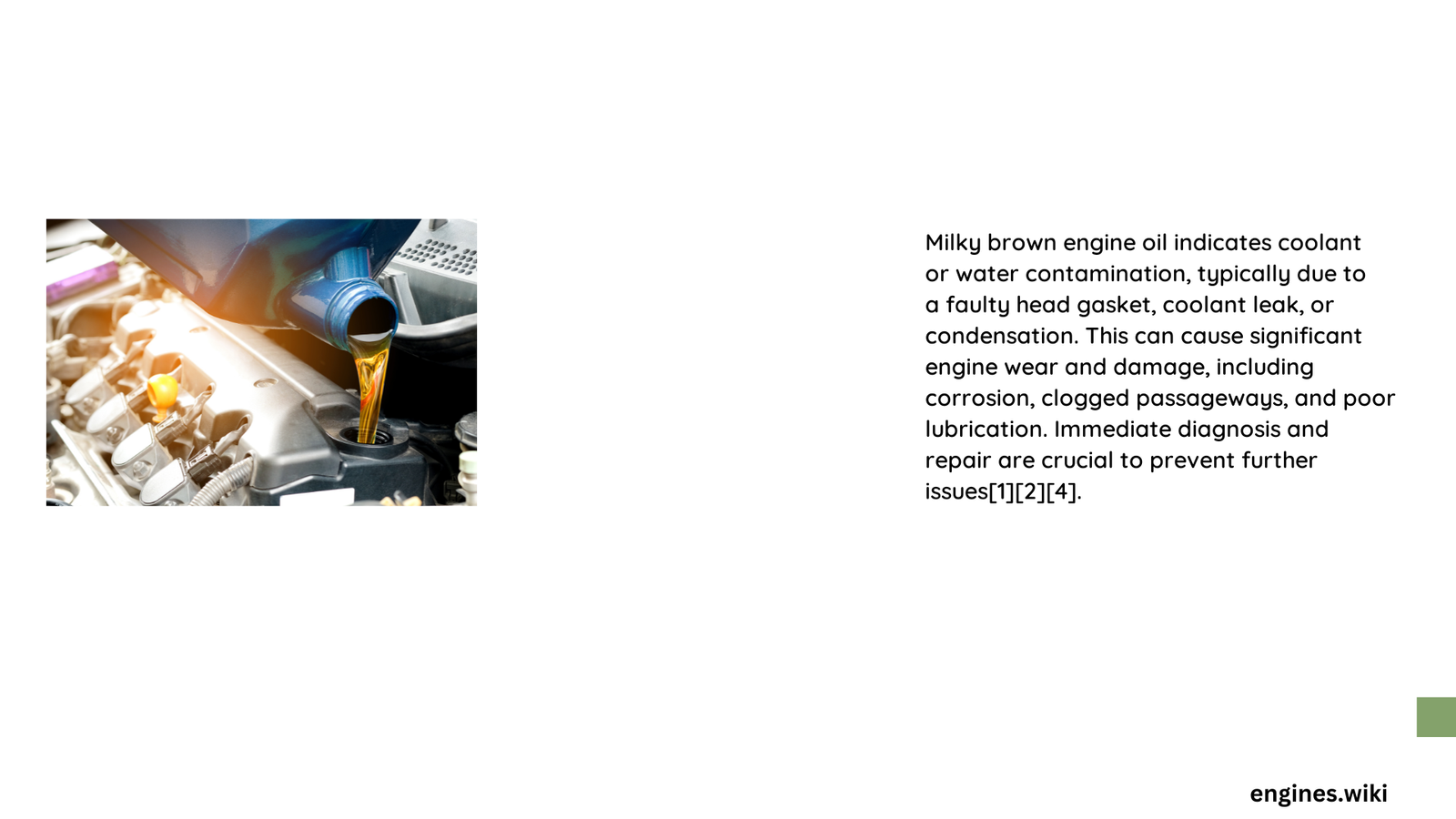Engine oil turning milky brown is a critical warning sign indicating potential serious internal engine problems. This discoloration typically results from coolant leakage, water contamination, or condensation mixing with engine lubricants, which can lead to significant mechanical failures if left unaddressed. Vehicle owners must understand these symptoms to prevent costly repairs and maintain optimal engine performance.
What Causes Engine Oil to Turn Milky Brown?
Coolant Contamination Mechanisms
Coolant infiltration into engine oil represents the most prevalent cause of milky brown discoloration. This phenomenon occurs through several critical pathways:
| Contamination Source | Potential Damage Level | Repair Complexity |
|---|---|---|
| Blown Head Gasket | High | Complex |
| Cracked Engine Block | Critical | Extremely Complex |
| Damaged Cylinder Head | Moderate | Moderately Complex |
Head Gasket Failure Indicators
- Persistent white smoke from exhaust
- Overheating engine
- Reduced coolant levels without visible leaks
- Milky residue on oil cap
Water Intrusion Pathways
Water can enter engine oil through multiple mechanisms:
- Condensation Buildup
- Common in cold, humid environments
- Occurs during infrequent vehicle usage
-
Prevents proper oil lubrication
-
External Water Exposure
- Driving through flooded areas
- Improper engine washing techniques
- Compromised engine seals
Diagnostic Strategies for Milky Brown Oil
Visual Inspection Techniques
- Check oil dipstick color and consistency
- Examine oil cap for milky residue
- Inspect crankcase for emulsified oil appearance
Professional Diagnostic Methods
- Comprehensive oil analysis
- Pressure testing cooling system
- Detailed engine component examination
Potential Consequences of Neglected Milky Oil

Immediate Risk Factors
- Accelerated engine wear
- Reduced lubrication effectiveness
- Potential catastrophic engine failure
Long-Term Mechanical Implications
- Increased friction between moving parts
- Compromised engine performance
- Potential complete engine replacement
Recommended Immediate Actions
- Stop driving immediately
- Do not start the engine
- Contact professional mechanic
- Arrange comprehensive diagnostic assessment
Cost Considerations
Potential Repair Expenses:
– Minor repairs: $500 – $1,500
– Major engine work: $2,000 – $6,000
– Complete engine replacement: $4,000 – $8,000
Prevention Strategies
- Regular oil changes
- Maintain proper cooling system
- Address minor leaks promptly
- Use high-quality engine lubricants
- Monitor vehicle performance consistently
Technical Recommendations
- Use manufacturer-recommended oil viscosity
- Maintain proper engine operating temperature
- Implement routine maintenance schedules
Expert Insights
Automotive engineers emphasize that milky brown engine oil is never normal and requires immediate professional intervention. The emulsification process indicates serious internal contamination that can rapidly deteriorate engine components.
Pro Tip: Early detection and swift action can prevent extensive engine damage and save thousands in potential repair costs.
Final Diagnostic Checklist
- ✓ Verify oil color and consistency
- ✓ Check for coolant leakage
- ✓ Inspect head gasket integrity
- ✓ Evaluate cooling system performance
- ✓ Consult professional mechanic
Warning: Continued operation with milky brown oil can cause irreversible engine damage.
Conclusion
Understanding engine oil milky brown symptoms empowers vehicle owners to take proactive maintenance steps, potentially saving significant repair expenses and preventing catastrophic mechanical failures.
